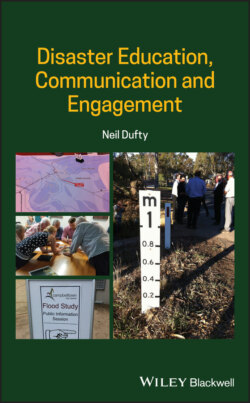Читать книгу Disaster Education, Communication and Engagement - Neil Dufty - Страница 19
2.2.2.3 Recovery
ОглавлениеCommunication after a disaster is critical to ensure a speedy community recovery and reconstruction. In the early phases of recovery, this communication can be conducted by humanitarian organisations, as there is a tendency for media sources to move on to the next newsworthy event.
According to Hannides (2015), ‘in recent years, aid agencies have placed more emphasis on the need for information and communication in crisis, influenced by advances in technology that have dramatically increased the reach and potential of information, and by learning from the humanitarian failure that results from a lack of information and communication’.
There are two distinct, but related types of recovery crisis communication:
1 Communication that seeks to improve the humanitarian aid response.
2 Information and communication that seeks to meet the direct needs of people affected by crisis (usually involving some form of media intervention).
Communications that take place during acute crises can be different from the ones that occur during long-term reconstruction (Government of Australia 2014).
During acute crises, communication practices require a rapid gathering, verification, and distribution of information to multiple social groups about what actions have to be taken in order to reduce risk; on the other hand, long-term communication initiatives are typically developed in a context with lower risk and tend to convey messages aimed at social and behavioural change, policy reform, capacity building, and promotion of accountability and feedback mechanisms. During disaster recovery, more time is allowed to single out vulnerable social groups and identify information and communication needs for each of these and target actions accordingly.
Despite the differences between acute crises and disaster reconstruction, some common best practices in communication can be highlighted. For example, in both response and recovery contexts it is advisable to make use of a range of communication channels to reach out to a broader audience (Australian Red Cross 2010). Coordination is a core requirement in both crisis and recovery stages since the risk of duplicating efforts is high as many different actors participate in the disaster response and disaster reconstruction efforts, including governmental agencies, humanitarian organisations, private companies, media and professional groups, and community-based groups.
